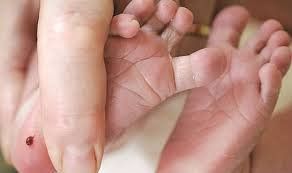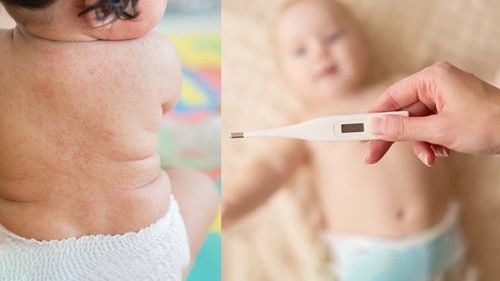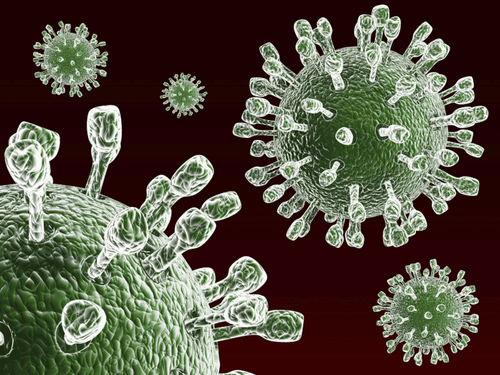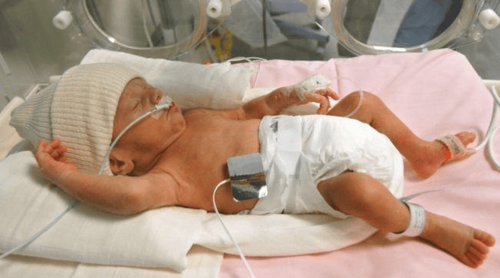This is an automatically translated article.
The article was professionally consulted by Specialist Doctor II Cao Thi Thanh - Pediatrician - Department of Pediatrics - Neonatology - Vinmec Hai Phong International General Hospital.Continuous Positive Airway Pressure (CPAP) in the supportive treatment of children with acute respiratory failure - in case the child is still able to breathe on his own but still cannot provide the body with the necessary oxygen needs - by by creating a continuous positive pressure during a breathing cycle.
1. What is continuous positive airway pressure?
Acute respiratory failure is the leading cause of hospitalization in neonates, especially premature infants. Respiratory failure can cause rapid death or long-term sequelae if not diagnosed and treated promptly.Continuous positive pressure breathing is one of the methods of breathing support for patients with respiratory failure - the child is still able to breathe - by maintaining a continuous positive pressure throughout the breathing cycle. The effect is to make the alveoli not collapse at the end of expiration, increase gas exchange, reduce respiratory work.
Normal on spontaneous breathing: During inspiration, airway pressure will be more negative than atmospheric pressure, more positive during expiration, and return to zero at the end of expiration. But for continuous positive airway pressure breathing, the CPAP system will create a continuous positive pressure on the airway, including the time of inspiration and expiration. Thereby helping the alveoli not collapse at the end of expiration, increasing gas exchange, reducing respiratory work.
The CPAP system is connected to the patient by endotracheal tube, nasal cannula, nasal cannula or mask depending on the case.
2. Indications and contraindications of CPAP

Respiratory failure failed with oxygen through the nasal passages Apnea in premature infants Pulmonary atelectasis Endometrial disease (Respiratory distress syndrome in children) Pulmonary edema Asphyxia Tracheal malacia or other similar lower respiratory tract abnormalities Patients weaning off ventilators Bronchopneumonia Support for active postoperative respiratory failure Contraindicated continuous positive pressure breathing during case:
Hypovolemic shock Respiratory muscle paralysis also should not use this method Uncoordinated disorder of consciousness Undrained pneumothorax
3. Continuous positive pressure breathing to support children with acute respiratory failure
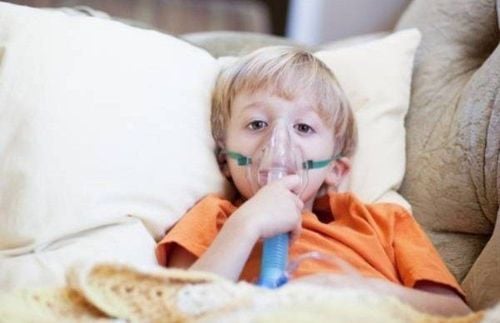
Respiratory failure is a consequence of many causes, in patients with acute respiratory failure still have the ability to breathe on their own but not guaranteeing oxygen supply to the body, the patient still has signs of shortness of breath when breathing oxygen.
In addition, CPAP breathing helps to reduce the rate of intubation and mechanical ventilation in patients with acute respiratory failure, thereby reducing complications such as infection, drug use, and quality of care and treatment.
3.2 Role of continuous positive airway pressure in the treatment of respiratory failure. Prevention of complications of respiratory failure after cesarean section This is a non-invasive respiratory support method in patients with respiratory failure who is still breathing on their own and has failed to use oxygen, with high efficiency, ease of application and safety in patients. Children Reducing rates of intubation and mechanical ventilation reduces the risk of ventilator-associated complications, especially nosocomial infections. Non-collapsed alveoli at the end of expiration increase functional residual capacity, gas exchange, and blood oxygenation. Opening the small bronchi, thereby helping to treat and prevent the risk of atelectasis Thanks to the positive pressure, it reduces the amount of fluid from the capillaries into the alveoli, thereby reducing the risk of pulmonary edema. Thanks to the method of continuous positive pressure breathing in the treatment of acute respiratory failure in children, it has helped to reduce the rate of mechanical ventilation, thereby reducing complications caused by mechanical ventilation, and limiting the mortality rate caused by respiratory failure. and improve the quality of care.
Currently, Vinmec International General Hospital applies continuous positive pressure breathing for pediatric patients with acute respiratory failure, this is a safe, highly effective and safe method for young children. .
Doctor Thanh has worked for 25 years in the treatment of neonatal pediatric diseases, of which 23 years worked at the neonatal department of Hai Phong Obstetrics and Gynecology Hospital (with experience in neonatal resuscitation in the operating room/room). giving birth + taking care of late premature babies (34 weeks - 37 weeks), 02 years working at Hai Phong Children's Hospital Requesting Clinic.Dr. Thanh is currently working in Pediatrics - Neonatology Department of International General Hospital Vinmec Hai Phong
Please dial HOTLINE for more information or register for an appointment HERE. Download MyVinmec app to make appointments faster and to manage your bookings easily.





